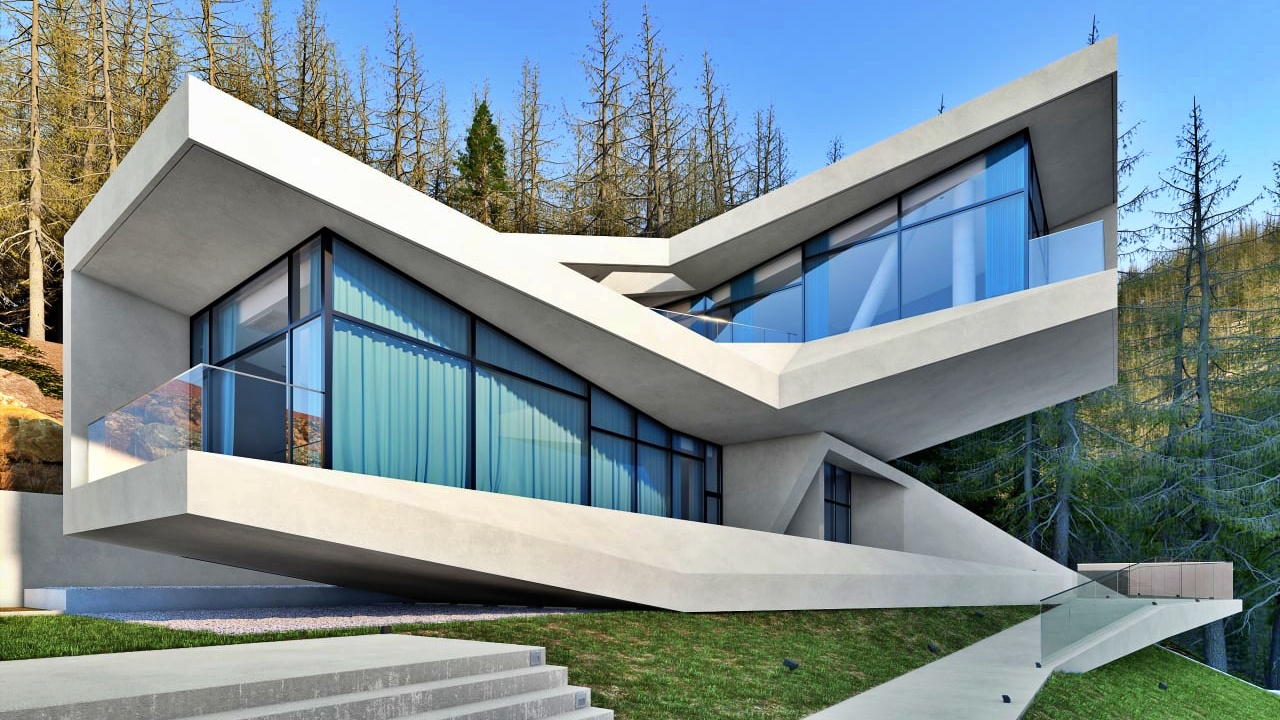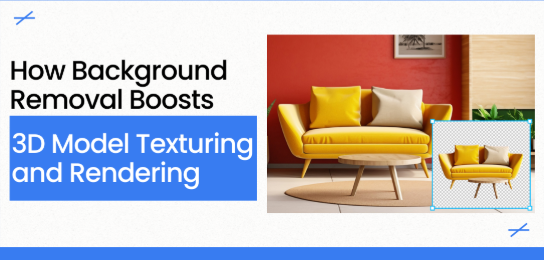Why Background Removal is Key to High-Quality 3D Modeling and Rendering
For industries like real estate or eCommerce that rely on high-quality 3D visuals to market their products and attract consumers, achieving realism is the ultimate goal. But what many don’t realize is how much background elements complicate that goal by adding layers of difficulty to texturing and rendering. Unlike the straightforward background removal in 2D images, 3D modeling require a careful process that maintains depth, detail, and integrity. So, what makes background removal in 3D models so complex, and why is mastering it the key to more realistic and effective product configurators? Let’s understand it through this blog.
Why There is a Need for Precise Background Removal in 3D Models
While image backgrounds can add life to 3D product images, sometimes they can deteriorate the overall visual appeal and detail of the item. That is why it becomes crucial for businesses to focus on background photo editing. Here is how background elements can add noise to the 3D product visuals:
- Texture Mapping Disruptions
Background elements in 3D images can interfere with texture mapping, causing textures to look distorted or misaligned. When a model’s background isn’t precisely removed, it can throw off the entire surface detail, making the model appear less realistic and polished.
For Example: Picture a 3D model of a leather wallet with a fine, even grain texture. Background elements, like nearby shadows, could create areas on the wallet that look darker or have unwanted lines across the surface. Instead of seeing a consistent leather texture, viewers might notice these patches, which make the leather look less realistic and distract from the overall quality.
2. Color Balance Issues
In 3D imagery, background elements often affect color tones and contrasts within the model, leading to uneven or unnatural color balance. For example, if a 3D model has any reflected colors from the background, it can create color inconsistencies that are particularly noticeable in high-resolution or close-up renders.
3.Depth Perception Challenges
Maintaining accurate depth perception is crucial for realism in 3D product modeling. Background elements can obscure the model’s boundaries, making it difficult to achieve a clear sense of spatial depth. Precise background removal isolates the model, enhancing its dimensionality and making it visually “pop” against any background or environment.
How Background Removal Optimizes Texturing in 3D Models
- Enhanced Texture Precision
Background removal in 3D models eliminates visual noise and distractions, allowing textures to be applied with cleaner, sharper detail for enhanced realism. This isolation prevents texture bleeding or overlaps, which is especially valuable in product visualization, where every detail counts. Additionally, working with a background-free model provides the flexibility to make quick adjustments, helping artists and designers apply textures faster without compromising quality.
- Consistent Lighting and Shading
Background removal facilitates controlled lighting setups, which is crucial for achieving realistic textures. Without conflicting background elements, lighting and shading can be focused directly on the object, creating a balanced and lifelike appearance. This control over lighting is especially beneficial for industries like gaming and product visualization, where even subtle shading details can enhance the perceived realism and depth of the model. Controlled lighting ensures that textures respond appropriately to light, maintaining visual coherence across different scenes and environments.
Impact of Background Removal on 3D Model Rendering Efficiency

Removing background from 3D images not only helps enhance the texture and visual appearance of objects but also improves the model rendering speed up to a significant extent. It can lead to:
- Reduced Processing Load
Removing extraneous background data reduces file size, optimizing the 3D model for faster processing and rendering. In applications like gaming or interactive apps, where responsiveness is key, this reduction allows for faster frame rates and enhanced user experience.
- Streamlined Rendering Pipeline
Background elements often add unnecessary layers and steps, increasing the time and complexity required to achieve the final output. By removing background elements, the process can be simplified, ensuring quicker iterations and faster project completion times.
Can Automated Tools be Enough for Ensuring Precision in Background Removal for 3D Modeling?
Automated tools can be quite effective in background photo editing, especially for simpler or uniform backgrounds. They offer speed and cost-efficiency, making them suitable for straightforward tasks where precision demands are lower. However, when it comes to 3D product modeling, precision is often critical to maintain quality and realism, and automated tools may fall short in several areas:
-
Dealing with Complex Backgrounds and Fine Details
Automated tools can struggle with handling edge artifacts, transparent sections, or multi-layered backgrounds with overlapping textures, which are common in 3D models. Human intervention is often necessary to refine these details for a clean, professional result.
For example, automated background removal tools can struggle with images where the object of interest isn’t clearly separated from the background. In these cases, the tools may mistakenly erase parts of the object, interpreting them as background elements and reducing the quality of the result, as shown in the below image:
2. Ensuring Texture and Depth Consistency
Maintaining consistent textures and preserving depth perception is crucial in 3D models. Automated tools may not account for subtle variations in shading or lighting that a skilled editor can manually adjust, which ensures that the model appears realistic when rendered.
3. Handling Lighting and Shadow Effects
Shadows, reflections, and light diffusion add complexity to background removal, especially in 3D product modeling, where lighting consistency can make or break the quality of a model. Manual adjustments are often essential to retain realistic lighting effects that automated tools might remove or distort.
4. Adaptability to Different Platforms and Uses
Different applications (e.g., AR, VR, gaming) have varied requirements for 3D models, often needing nuanced adjustments that go beyond what automated tools can handle. Professionals can ensure that background removal is tailored to each platform’s needs, maintaining visual integrity.
Practical Approaches to Bring Human Expertise in 3D Background Removal Workflow
To bridge the gap left by automated background photo editing tools, human experts can be introduced in the process, primarily through two effective approaches, i.e.:
-
Build An In-house Team
Consider hiring an in-house team for regular background removal and retouching work, which allows for close integration with other departments (like design and product visualization). This setup is particularly useful if background removal is a constant requirement, as it provides consistent quality and faster turnaround times.
However, hiring a dedicated team of background removal experts requires a considerable investment of time and effort, as they first need thorough training on your specific workflow and editing requirements.
-
Outsource Background Removal Services to a Trusted Provider
For large-scale projects or high-frequency work, outsourcing background removal services can be a more viable and cost-effective solution. Reputed service providers bring a dedicated team of experts, tailored solutions, and access to advanced resources to ensure high quality and precision across large volumes of work.
Key Takeaway
Creating a flawless 3D model isn’t just about adding layers of detail; sometimes, it’s about removing what doesn’t belong. Background removal serves as a subtle, powerful tool in making your models versatile, efficient, and visually cohesive. Whether your model ends up in a game, a virtual showroom, or a marketing campaign, this process ensures it’s ready to perform under any conditions.
However, to achieve accuracy and efficiency in the background removal process, you must blend technology with human precision. With an effective human-in-the-loop approach, you can achieve realism in 3D models without any distracting elements or noise.
